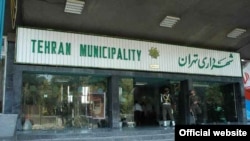Tehran municipality has allocated more than 220 billion rials (roughly $50 million) budget to propagate “insight, culture and values” in the current Iranian fiscal year (ending March 20, 2019).
“Insight”, “culture” and “values” are vague terms typically used in the Islamic Republic to describe propaganda for the conservative version of Shi’ism.
According to “RoozArooz” (Day to Day) website, Tehran municipality has also allocated a separate budget to assist Shi’ite “religious societies and associations” in the capital.
The richer a neighborhood in Tehran, the more money it will receive from the City Hall, “RoozaArooz” has reported. A secular life style is more prevalent in Tehran’s well-to-do neighborhoods than in the poorer districts where people are more religious.
News concerning the municipality financial assistance to religious affairs has repeatedly been criticized on social media. Tehran municipality, accused of widespread financial corruption, is incapable to render basic services to the citizens, critics argue, and add that when you cannot provide the required services, it doesn’t make sense to assist affairs and activities not related to the municipality.
Last February, a prominent city reporter, Yashar Soltani disclosed that Tehran municipality, under its so-called reformist mayor, Mohammad Ali Najafi paid $360,000 to a Shi’ite Society affiliated with a renowned religious eulogist.
Najafi, an MIT educated, newly elected mayor was forced to resign on April 10 in what was seen as persistent pressure by conservatives and hardliners. The new mayor had been revealing widespread corruption during the previous city administration led by a former IRGC commander.
However, Tehran municipality’s large financial donations to religious entities including mosques and Hossainiyehs, during Najafi’s predecessor, IRGC General Mohammad Baqer Qalibaf, was a routine procedure.
Hossainiyehs are places exclusively used for religious gatherings and mourning Shi’ites third Imam, Hussein ibn Ali.
In the meantime, Sunni resident of Tehran have not yet been allowed to build one single mosque in the capital with their own money, critics say.
Furthermore, Tehran’s representative to parliament Qassim Mirza’ei disclosed February 9 that some of the municipality’s $60 million financial assistance to a Shi’ites holy shrine, “Emamzadeh Qazi Sabir” in a posh Tehran neighborhood, was spent to build saunas and jacuzzi pools.
Nevertheless, the Emamzadeh Qazi Sabir’s caretaker told IRGC affiliated news website, Fars, “Only $290,000 of the municipality’s financial assistance was used for the sauna and jacuzzi and the rest, $34 million, for constructing other facilities, including the kitchen and a base for ‘baseej’.”
Baseej is a paramilitary force affiliated with IRGC and its personnel are mainly used for dispersing protest rallies, suppressing dissidents and uprisings.
Allocating large sums of money to Shi’ite religious entities and activities are not limited to the municipalities across Iran. The central government also allocates billions of dollars annually to the same institutions without expecting accountability.
While presenting the new budget for Iranian new year (beginning March 21), President Hassan Rouhani for the first time listed the government’s budget allocations to religious institutions, implicitly lamenting that none of them are accountable to the administration and never present their balance sheets.
Rouhani’s move was seen as an attempt to put pressure on clerics and conservatives to relent and not force the government to spend much needed much on a large privileged class of people who live off religious institutions.
At the time a lot controversy ensued on social media, right before large-scale unrest broke out on December 28, 2017.
The following are some of the examples of the governmental funds allocated to ideological entities in the Islamic Republic of Iran:
$110 million for the High Council of Religious Seminaries, which oversees all religious seminaries in the country and issues permits for the establishment of new schools, among other things. Its budget shows an increase of more than 16 percent compared to the previous year.
$105 million for “supporting religious seminaries.” From that amount, $88 million will be allocated to training male clergymen and $16 million for “cultural and promotional activities” by male students of religious seminaries.
$150 million allocated to the Service Center for Religious Seminaries, a welfare institution that provides support to retired and disabled clergymen and the families of deceased clergy. The institution also pays scholarships for religious seminaries and funds cultural and sports activities for students.
$29 million for the Council for Planning and Management of Religious Seminaries in Khorasan Province.
$64 million for the Policy Making Council for Women’s Religious Seminaries.
$75 million for Al-Mustafa International University, an umbrella organization for religious seminaries providing education to foreign students within and outside of Iran. This institution is also used for expanding influence abroad. It is worth mentioning that the budget allocated to Al-Mustafa University is much higher than the fund provided to some of the major regular universities, like Amir Kabir University in Tehran with $63 million, and Tabriz University with $64 million.
$23 million for the supreme leader’s representative in the Islamic Revolution Guards Corps (IRGC). The fund is spent on deploying preachers, overseeing the compatibility of IRGC rules and regulations with Twelver Shi’ism version of Islam, spiritual ceremonies, and guiding and promoting political vision.
$17 million for maintaining the mausoleum and residence of Ayatollah Rouhollah Khomeini, the founder of Iran’s Islamic Republic, and for protecting his ideological heritage by publishing books and holding commemorations and conferences.
It should also be noted that funds from the government budget are only a part of the income for influential clergymen and the religious institutions they control. Moreover, the religious institutions in Iran are exempt from paying any tax.





